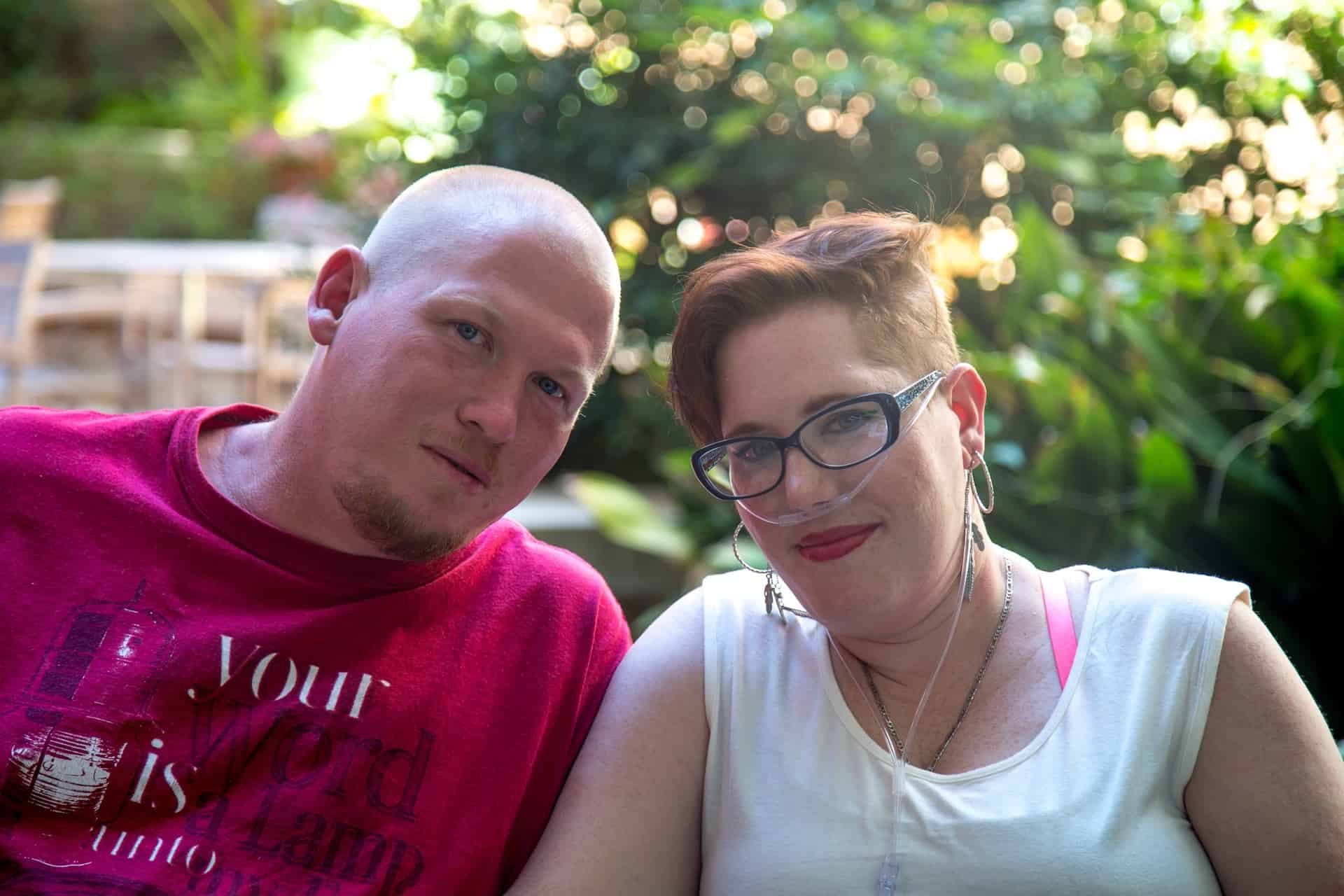Kingsland Woman with Rare Lung Disease Finds Courage
| Nov. 1, 2017 | Randy Edwards is moved to tears when he talks about how far he’ll go to make sure his wife is happy and well. He says he felt helpless in February 2017 when Leah Edwards, 29, came down with pneumonia and wasn’t getting better.
In April, Leah Edwards was vomiting and struggling to breath. She describes the pain as feeling like a python had wrapped itself around her chest.
“My mind was racing 100 miles an hour,” Randy Edwards said
. “I knew something was really wrong, that it was more than a regular sickness. I wanted the best care I could get for her.”
Edwards drove his wife 70 miles from Kingsland to UAMS. She was admitted right away. He found out UAMS doctors were concerned she still had pneumonia after so long and performed a bronchoscopy.
“She has pulmonary alveolar proteinosis,” said Nikhil Meena, M.D., an interventional pulmonologist and assistant professor in the UAMS Division of Pulmonology and Critical Care. “That means her body is no longer able to clear out the buildup of a substance the lung ordinarily needs to keep its air sacs open for breathing.”

Nikhil Meena, M.D., an interventional pulmonologist, sees patients in the seventh floor clinics of the Winthrop P. Rockefeller Cancer Institute.
That substance is surfactant, a fluid secreted by the lung’s air sacs. Its purpose is to keep the air sacs from collapsing. But in someone with pulmonary alveolar proteinosis, or PAP, the fluid builds up in those air sacs and causes shortness of breath because that air sac cannot contribute to breathing.
PAP is a rare disease, present in less than 10,000 people in the country.
“When I found that out,” Leah Edwards said, “I felt like my life just stopped right there. I’m in my late 20s, healthy and active. Now I’m learning I have to be on oxygen for the rest of my life. This isn’t supposed to happen. It was very hard to take.”
Sitting in the healing garden outside the UAMS Cancer Institute, the couple hold hands and tell each other jokes. They’ll be married six years this December and say they plan to make
the most of their time together in spite of the news the received earlier this year. Leah Edwards says she’s even started wearing red lipstick as a symbol.
“I call it my courage lipstick,” she said. “I used to look at this oxygen tank as a grim reminder that I’m dealing with this disease. Now I look at it as a reminder that I’m strong. I’m brave. Hopefully that will shine through and encourage other people.”
“It took me a while to wrap my head around it,” Randy Edwards said. “But it’s a part of life now. We just keep putting one foot in front of the other.”
Edwards now has to come in for treatment every three months to have her lungs cleared of the surfactant. Meena says the treatment consists of putting the patient on a breathing machine through a breathing tube with two tubes, one to wash all of the surfactant out of one lung using about 25 liters of saline and the other to help the other lung breath. So far, she’s had two cleanings, one for each lung.
“Many patients go into remission after three to four years of lung lavage,” Meena said. “It seems that their bodies are once again able to clear the surfactant on its own. We’ll have to monitor to see if that is the case for Leah.”
“Dr. Meena and his staff are very compassionate,” Leah Edwards said. “I feel like he understand how troubled we were and truly cares for us. He told me, ‘It may not be an easy journey, but we’re going to take care of you. You’re going to be okay.’”
“I wake up every morning and pray for her,” Randy Edwards said. “She has good days and bad days. But as long as there’s life, there’s hope. Don’t ever give up hope on anything.”


